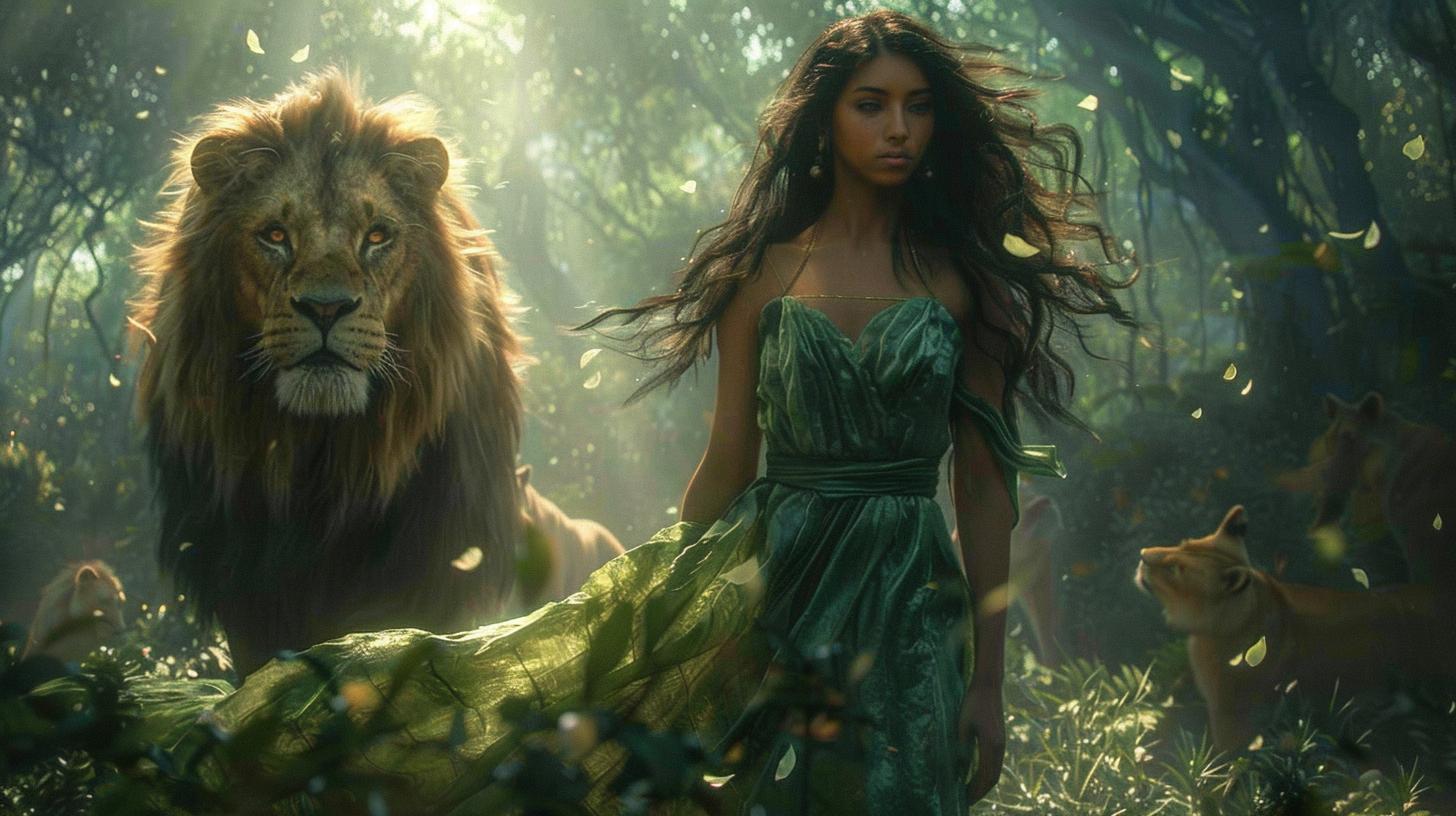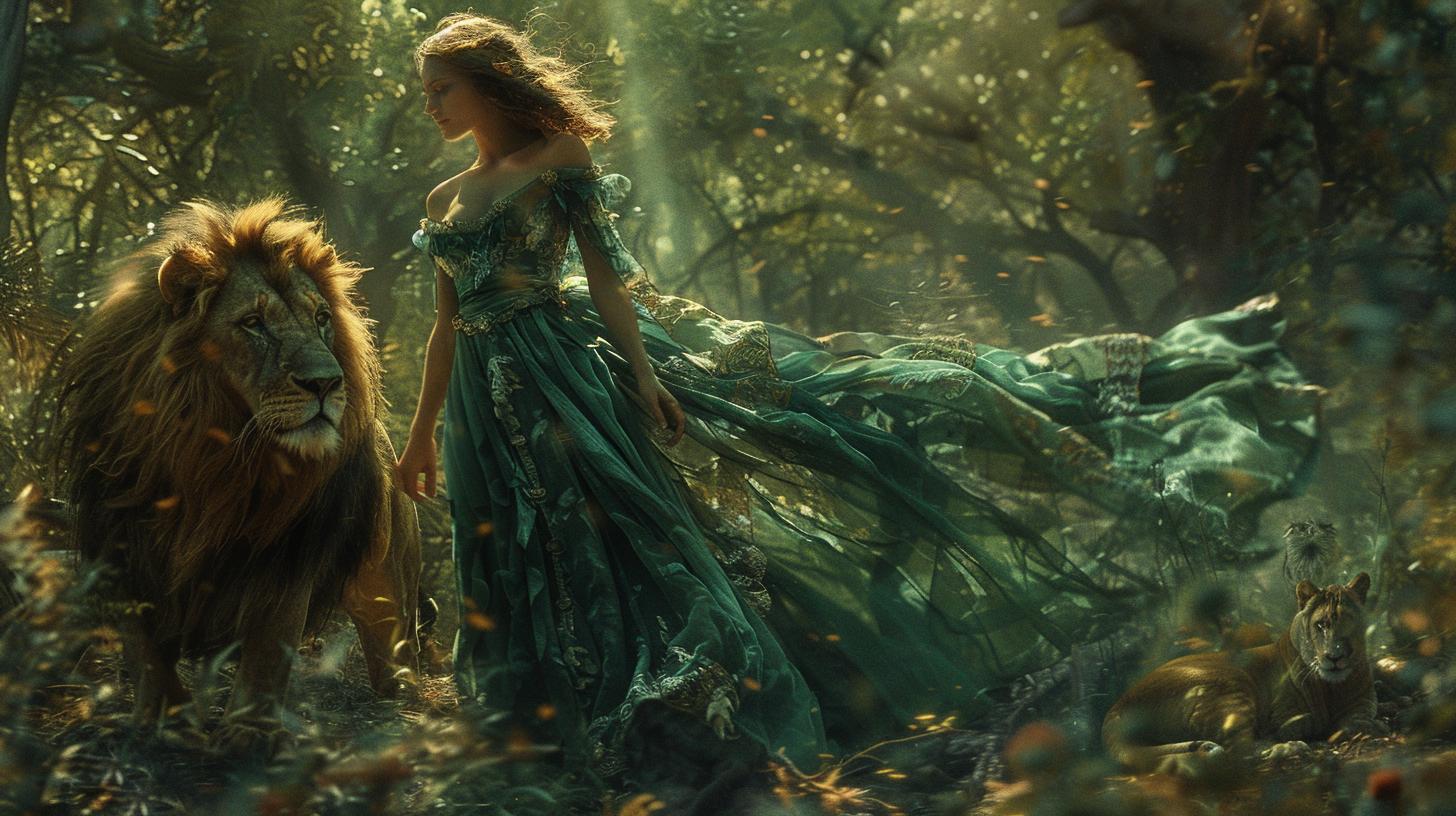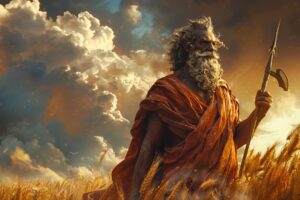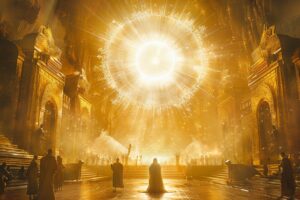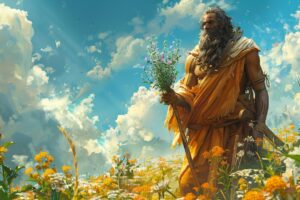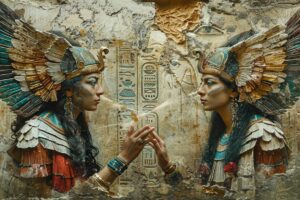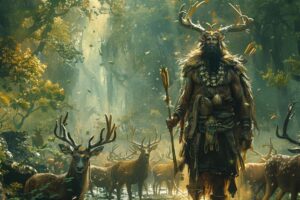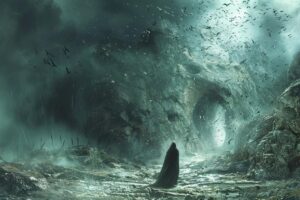Inara Goddess: Myths, Legends, and Modern Influence
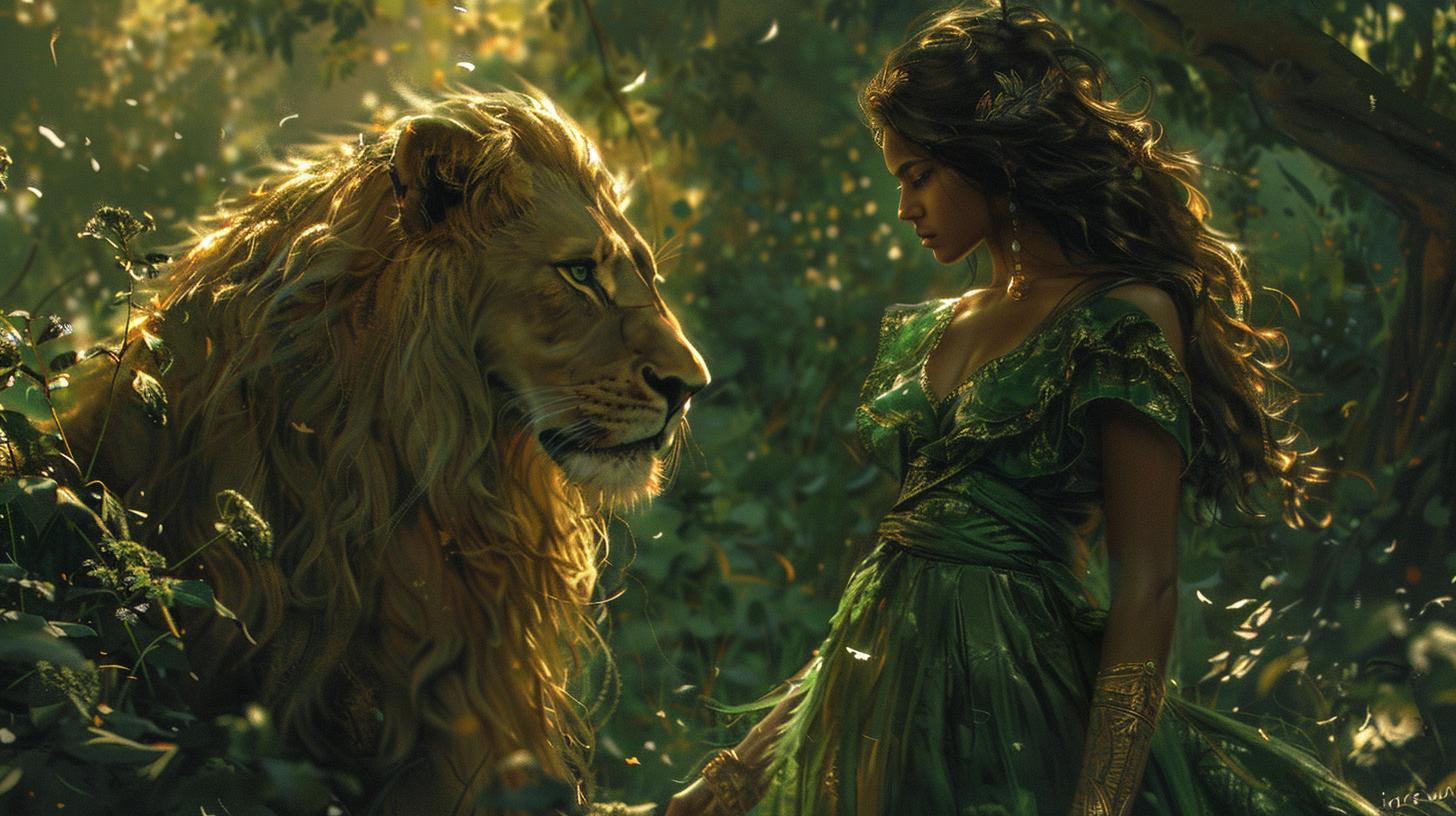
Inara is a goddess from Hittite mythology, known for her association with animals and nature. She is the daughter of the storm god Teshub. Her comparable figure in Greek mythology is Artemis.
Inara plays a central role in myths, including the battle against the dragon Illuyanka.
Her stories often involve themes of love, fertility, and strategic warfare.
Overview of Inara
Inara, revered in the Hittite pantheon, holds central significance in the myths and legends of ancient Anatolia, embodying themes of nature, warfare, and divine justice.
Introduction to Inara
Inara is a central deity in Hittite mythology, worshiped as the goddess of the steppe and wild animals. She is the daughter of Teshub, the storm god. Her myths highlight her complex nature and the integral role she plays in the narratives of her culture.
Her Role in Hittite Mythology
Within Hittite mythology, Inara’s position is deeply interconnected with the natural world and cosmic order. As the goddess of wild animals and the steppe, she bridges the realms between the divine and the untamed landscapes.
Inara participates in key mythological events, such as the battle against Illuyanka, showcasing her as both a protector and a strategist. Her involvement in mythological tales illustrates the Hittite values of loyalty, bravery, and the importance of maintaining cosmic harmony.
Comparison with Greek Mythology
A striking parallel exists between Inara and the Greek goddess Artemis. Both deities share attributes related to wild animals, hunting, and aspects of nature. This comparison underscores the cultural exchanges and similarities between ancient civilizations.
Inara, akin to Artemis, is associated with virginity and the wilderness. While Artemis is celebrated in Greek mythology for her hunting prowess and protection of wildlife, Inara’s role extends into the realms of strategic warfare and elemental control, particularly through her father’s influence as a storm god.
Despite these similarities, Inara’s unique myths and her significance within the Hittite cultural and religious framework provide distinct differences in how her stories unfold and the values they reflect.
Legends and Myths Associated with Inara
The legends and myths surrounding Inara highlight her significance in Hittite mythology and her powerful connections with nature and the divine.
The Battle Against Illuyanka
The Feast and the Mortal Hupasiyas
Inara’s most famous myth involves the dragon Illuyanka. After Illuyanka defeats Inara’s father, Teshub, she devises a cunning plan. Inara organizes a grand feast during the festival of Purulli to lure Illuyanka and his family.
To execute her plan, Inara enlists the help of a mortal named Hupasiyas from Zigaratta.
In exchange for his assistance, Inara becomes Hupasiyas’ lover. During the feast, Illuyanka and his family indulge in the food and drink, becoming heavily intoxicated.
Hupasiyas seizes this opportunity to bind the dragon and his kin with rope, making them vulnerable.
The Defeat of the Dragon Illuyanka
With Illuyanka and his family incapacitated, Teshub is able to step in and defeat the dragon. The victory of Teshub over Illuyanka is not just a triumph of strength but also a testament to Inara’s strategic brilliance.
This act ensures the preservation of cosmic order and solidifies Inara’s role in maintaining balance within the mythology.
The Tragedy After the Battle
The House on the Cliff
Following the battle, Inara builds a house on a cliff for Hupasiyas. She gives him strict instructions not to look out of the window, warning that doing so might lead to unforeseen consequences.
Inara’s instructions highlight a recurring theme of divine-human interactions in mythology, where mortals are often tested by gods with specific prohibitions.
What Happened to Hupasiyas?
Despite the clear warning, Hupasiyas is overwhelmed by curiosity and peers out the window, yearning for a glimpse of his family. This act of defiance leads to a tragic turn of events.
There are various versions of what happens next. In some interpretations, Inara may have killed Hupasiyas for his disobedience, demonstrating the severe consequences of defying divine commands. In other versions, he is reunited with his family, albeit at a significant cost, reflecting the complex relationships between gods and mortals.
Inara’s Disappearance
The Promise from the Mother Goddess Hannahanna
Another significant myth involves Inara’s disappearance. The mother goddess Hannahanna once promised Inara land and a husband during a consultation. Despite this promise, Inara vanishes, and her absence causes great concern.
This story mirrors themes from other mythologies where the disappearance of a deity leads to a significant quest or search, highlighting the importance of that deity within the pantheon.
Search by the Storm God Teshub
Inara’s father, Teshub, aided by Hannahanna, embarks on a search for his daughter.
The search is symbolized by the use of a bee, an element that resonates with other mythological narratives involving divine searches.
The quest to find Inara brings into focus the deep familial bonds in Hittite mythology and suggests parallels with the Greek myth of Demeter and Persephone, where a similar search occurs due to a divine disappearance.
Attributes and Representation of Inara
Inara’s characteristics and her representation in art reveal her connection to nature, wildlife, and strategic prowess.
Physical Characteristics
Art Depictions
In Hittite art, Inara is often depicted adorned with symbols of nature and wildlife. While there are no specific descriptions of her physical attributes in the ancient texts, she is typically imagined as a radiant figure dressed in regal attire.
The representations often show her in flowing robes, signifying her divinity and connection to fertility and love. These artistic depictions serve as a celebration of her beauty and tranquility.
Symbolism with Nature and Animals
Inara’s close association with animals and the natural world is a significant aspect of her representation.
She is frequently illustrated in environments abundant with life, such as surrounded by blooming flowers or thriving fauna. These symbols emphasize her ties to the cycles of nature and her dominion over the wild.
The artistic symbolisms might also include animals such as lions or birds, representing her power and command over the wilderness.
Possible Comparison with Artemis
Inara stands parallel to the Greek goddess Artemis, known as the potnia theron or “mistress of animals.” This comparison highlights Inara’s role as a protectress of wildlife and skilled hunter.
Both goddesses share attributes such as strength, agility, and proficiency in archery. The influence of Hittite art on Greek styles suggests that Inara could have been depicted similarly to Artemis, showcasing her with elements of beauty, strength, and connection to the natural world.
These representations underscore her prowess in both hunting and strategic warfare, reflecting her multifaceted role in mythology.
Family and Relationships in Hittite Mythology
Inara’s family connections play a significant role in her stories and the broader Hittite pantheon.
Her Father: The Storm God Teshub
Teshub, also known as Tarhunt, is a major deity in Hittite mythology. He is the god of the sky, storms, and thunder. His powers include controlling the weather, especially bringing rain to ensure the fertility of the land.
Teshub’s struggle against the chaotic forces, such as the dragon Illuyanka, often places Inara in key roles to support and restore cosmic order.
Siblings: Gods and Goddesses
Inara has several notable siblings within the Hittite pantheon. Two of the most prominent are Sarruma, the god of the mountain or moon, and Arinnitti, the goddess of the sun.
Sarruma
Sarruma plays a vital role in ensuring the protection of towns and communities, often depicted riding a tiger or lion. His connection to Inara shows the interwoven nature of protective deities in the Hittite mythos.
Arinnitti
Arinnitti is revered as the goddess of the sun and is associated with light and justice. Her relationship with Inara emphasizes themes of fertility and natural cycles, vital aspects of Hittite beliefs.
The Mother Goddess and Her Relations
The identity of Inara’s mother is not explicitly mentioned in many texts, but there are strong speculations about her being connected to the mother goddess Hebat or Hannahanna.
Hebat
Hebat, often considered the spouse of Teshub, reigns as a supreme mother goddess overseeing the heavens.
Her nurturing aspects complement Teshub’s stormy nature, establishing a balance in divine realms. This balance reflects in the attributes of their children.
Hannahanna
Hannahanna, linked to fertility and hunting, appears in myths interacting with Inara. An example is her promise to Inara in the time of distress. This portrays strong maternal connections and guidance.
Hannahanna’s influence over nature and fertility shows Inara’s inherited lineage.
Names and Etymology
The nomenclature and etymology of Inara reflect the cultural and linguistic diversity of the ancient Near East and surrounding regions.
Meaning of Inara
Inara’s name is derived from the Hittite word “innara-“, which translates to “power” or “strength.” This etymology underscores her formidable nature as a goddess associated with hunting and sovereignty.
Other Names and Cultural Connections
Annari in Luwian
In the Luwian dialect, Inara is known as “Annari.” This name reflects the linguistic diversity of ancient Anatolia and highlights the interconnectedness of the Hittite and Luwian cultures. The name Annari retains similar connotations of power and strength, consistent with Inara’s attributes.
Associations with Hannahannah
In Hittite mythology, Inara is sometimes associated with the Hittite mother goddess Hannahannah. This association may reflect shared attributes such as fertility and the natural world, reinforcing Inara’s multifaceted role within the pantheon.
Other Names and Cultural Connections
- Annari in Luwian
- Associations with Hannahannah
Powers and Abilities
Inara, revered for various aspects, embodies numerous powers and abilities, emphasizing love, warfare, and command over nature.
Goddess of Love and Fertility
Inara’s role encompasses the spheres of love and fertility, reflecting her deep connection to the life-giving forces of nature. As a deity linked to fertility, she influences the growth of crops and the well-being of animals, ensuring that the land remains fruitful and abundant.
Her presence is often associated with the renewal of life, symbolizing birth and rebirth in both the animal kingdom and human communities.
Inara also embodies the emotional and nurturing aspects of love.
Her influence extends to familial and romantic relationships, promoting harmony and affection. This dual role highlights the multidimensional nature of her divinity, showcasing her compassion alongside her formidable strength.
Warrior Skills and Strategic Brilliance
A formidable warrior, Inara’s skills in combat are legendary.
She wields weapons with dexterity, often imagined as proficient with a bow and arrow, drawing parallels to her connection with the hunt. Her warrior aspect is crucial in her assistance to her father, the storm god Teshub, particularly in the battle against cosmic chaos.
The Battle Against Illuyanka
- Inara’s strategic brilliance shines in her plan to defeat the dragon Illuyanka. She devises a clever scheme to lure the dragon into a vulnerable position during a feast.
- Her tactical acumen is evident as she orchestrates the intoxication of the dragon and its family, enabling their capture and eventual defeat by Teshub.
Command over Animals and Nature
Inara commands a unique rapport with animals, particularly those of the wild steppes.
This dominion allows her to influence and control wildlife, utilizing them for various purposes, from hunting to strategic advantages in warfare. Her connection with animals underlines her role as a protector of the natural world, ensuring the balance and preservation of wildlife.
Symbolism with Nature
Inara’s domain over nature is symbolized through her frequent representations with animals and natural elements. She is often imagined adorned with fauna and surrounded by flourishing flora, emphasizing her integral role in maintaining the equilibrium of the natural world.
This connection highlights her capacities to nurture and protect the environment.
Use of Magic and Deception
Inara’s abilities extend into the realm of magic and deception. Her strategic use of feasts and intoxicating substances to subdue her enemies indicates a profound understanding of psychological manipulation and magical practices.
These skills are vital in her efforts to restore cosmic order and aid Teshub in his battles.
Strategic Banquets
One of her notable strategies involves hosting feasts where she uses magical or intoxicating means to incapacitate her foes. This tactic not only showcases her cunning but also her ability to blend social activities with military strategy, providing an innovative edge in her confrontations.
Influence in Modern Times
Inara’s legacy persists through modern representations in various cultural mediums.
Representation in Contemporary Culture
Inara appears in various forms across contemporary culture, particularly in art, literature, and popular media. Her tales of love, strategy, and nature resonate universally.
Art
Modern artists often depict Inara as a symbol of strength and natural beauty. Her association with animals and nature is frequently represented in paintings, sculptures, and digital art.
Literature
Authors find inspiration in Inara’s mythos, incorporating her story into novels, poetry, and short stories. These narratives explore her roles and adapt her myths to modern contexts.
Media
Inara’s character has been featured in films, television series, and video games, appealing to audiences interested in mythology and ancient civilizations.
Relevance of Her Myths Today
Inara’s myths continue to hold significance, offering timeless lessons and themes.
Lessons on Strategy and Cunning
Her battle against Illuyanka illustrates the importance of strategy and intelligence in overcoming adversity. This story teaches value in careful planning and resourcefulness.
Nature and Environmentalism
Inara’s connection with the natural world resonates in today’s environmental movements. Her representation underscores the fundamental link between humans and nature.
Fertility and Renewal
The themes of fertility and renewal associated with Inara are relevant in rituals and traditions celebrating life cycles, growth, and regeneration.
Inara in Literature and Arts
Inara’s influence can be observed extensively in literature and the arts.
Literary Adaptations
- Retellings of her myths in modern novels and short stories.
- Her character serves as an archetype in fantasy literature.
- Poetic interpretations of her legends.
Influence in Visual Arts
- Inara is portrayed in contemporary paintings, capturing her mythological essence.
- Sculptures and installations inspired by her association with animals and nature.
- Digital art and animations showcasing her mythological battles and themes.
Performance Arts
Her stories inspire theatrical productions and performances, often symbolizing the struggle between order and chaos.
Educational Materials
Her mythology is included in educational curricula to teach about ancient civilizations and their belief systems.
Commonly Asked Questions about Inara
Inara’s myths provide rich insights into Hittite culture. Here, we explore frequently asked questions about her.
What is Her Role in the Myth of Illuyanka?
Inara is central to the myth of Illuyanka, a serpent-like dragon. After Illuyanka defeats her father, Teshub, she devises a plan to overthrow the beast.
Relying on her cunning, she orchestrates a grand feast during the Purulli festival.
Inara enlists the help of a mortal named Hupasiyas. They become lovers, which solidifies his loyalty to her.
During the feast, Illuyanka and his family become heavily intoxicated. This allows Hupasiyas to bind the dragon with a rope.
Once immobilized, Teshub kills Illuyanka, restoring cosmic balance.
How is Inara Depicted in Hittite Art?
In Hittite art, Inara is often associated with animals and the natural world. Although specific descriptions of her appearance are scarce, she is likely adorned with representations of wildlife or set in naturalistic environments.
Common artistic depictions include her dressed in flowing, regal attire that signifies her divine status. She might also be surrounded by symbols of nature, such as blooming flowers or ripe fruits, emphasizing her connection to fertility and abundance.
What is Her Connection to the Greek Artemis?
Inara’s role as the goddess of wild animals in Hittite mythology draws a strong parallel to the Greek goddess Artemis, who is also associated with hunting and wilderness.
Both goddesses hold domain over similar aspects of nature and are depicted as powerful, agile hunters. This connection highlights the cultural exchange and influence between ancient Anatolia and Greece.
What Happened to Hupasiyas After the Feast?
After the defeat of Illuyanka, Inara builds a house for Hupasiyas on a cliff.
She instructs him not to look out of the window, cautioning that he might see his family.
Despite her warnings, Hupasiyas eventually disobeys and gazes upon his family. The myths diverge on what happens next.
Some suggest that Inara kills him for his defiance. Others speculate that he is allowed to return to his family.
What is the Significance of Her Disappearance?
In another myth, Inara suddenly vanishes after a promise from the mother goddess Hannahanna to grant her land and a partner. This abrupt disappearance prompts her father, Teshub, to search for her.
With the help of a bee sent by Hannahanna, Teshub eventually finds her. This story shares thematic similarities with the Greek myth of Demeter and Persephone, emphasizing the cyclical nature of loss and reunion in mythological storytelling.

